《Introduction to Logical Theory》
| 作者 | 编者 |
|---|---|
| 出版 | Methuen & Co Ltd. |
| 参考页数 | 266 |
| 出版时间 | 1952(求助前请核对) 目录预览 |
| ISBN号 | 0416682200 — 求助条款 |
| PDF编号 | 812546858(仅供预览,未存储实际文件) |
| 求助格式 | 扫描PDF(若分多册发行,每次仅能受理1册) |
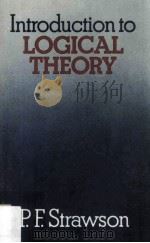
Chapter 1.LOGICAL APPRAISAL1
1.Logical appraisal;and other kinds1
Ⅰ.INCONSISTENCY2
2.Words of logical appraisal have connected meanings2
3.Contradicting oneself2
4.Statements,not sentences,are inconsistent with one another3
5.Incompatible predicates5
6.Negation7
7.Definition9
8.Linguistic rules and logical relations9
Ⅱ.REASONING12
9.Arguing,proving,inferring:validity12
10.Not all'valid steps'are steps in reasoning13
Ⅲ.THE LOGICIAN'S SECOND-ORDER VOCABULARY15
11.Use to be made of logician's higher-order words15
12.Contraries and contradictories16
13.Entailment and inconsistency19
14.Logically necessary statements;entailment and necessity21
15.A problem24
16.Logical equivalence;subcontrariety;necessary and sufficient conditions24
Chapter 2.FORMAL LOGIC26
1.The formal logician is not a list-maker26
Ⅰ.GENERALITY.THE USE OF FORMULAE26
2.The generality of logicians'entailment-statements26
3.The use of formulae27
4.Entailment between sentences and between formulae31
5.The range of values of a variable32
6.'Inconsistent','logically necessary'applied to formulae33
7.Misinterpretations of'?'35
8.The point of using'?'39
Ⅱ.FORM40
9.The limitations implied by'formal'.Rules for representative patterns40
10.Formal analogies and verbal frameworks43
11.A formal analogy without a framework:transitivity45
12.Logical constants47
13.Logical forms of statements explained in terms of formal analogies49
14.Logical form and logicians'formulae52
15.Mistakes about logical form53
Ⅲ.SYSTEM56
16.The logical ideal of system,and its effects56
17.Methods of systematization58
18.Abstract systems and their interpretation61
Chapter 3.TRUTH-FUNCTIONS64
Ⅰ.TRUTH TABLES64
1.Formation-rules64
2.The meanings of the symbols of the system65
3.Use of the tables in determining truth-conditions70
4.Use of the tables for establishing logical relations and testing formulae71
5.Some laws of the system74
Ⅱ.TRUTH-FUNCTIONAL CONSTANTS AND ORDINARY WORDS78
6.The customary identifications78
7.'~'and'not'79
8.'·'and'and'79
9.'?'and'if'82
10.'?'and'if and only if'90
11.'v'and'or'90
Ⅲ.TRUTH-FUNCTIONAL CONSTANTS AND LOGICAL RELATIONS.THE DEDUCTIVE SYSTEM OF TRUTH-FUNCTIONS93
12.'?'and'entails'93
13.The stroke-function96
14.The deductive system of truth-functions97
15.Examples of derivations100
Chapter 4.CLASSES:AN ALTERNATIVE INTERPRETATION OF THE TARULAR SYSTEM102
1.The system as an abstract exercise102
2.An alternative interpretation.Class-expressions and class-constants103
3.Class-statement formulae107
4.The use of the tables to establish logical rules about class formulae111
5.Parallels with ordinary speech.Re-expression of rules as entailments between class-membership formulae119
6.Limitations of this use of the mechanism of the tables120
Chapter 5.PREDICATIVE FORMULAE AND QUANTIFIERS125
Ⅰ.THE ELEMENTS OF THE PREDICATIVE SYSTEM125
1.Relations between the class and truth-functional systems125
2.The paraphrasing of class-statement formulae in a new notation129
3.Proofs in the new notation134
4.Multiple quantification and relational predicates138
Ⅱ.THE PREDICATIVE SYSTEM AND ORDINARY SPEECH:PRELIMINARIES143
5.The distinction between individual and predicative expressions:referring and describing143
6.Claims made on behalf of the symbolism of the system146
7.'(?)'and tenses150
Chapter 6.SUBJECTS,PREDICATES,AND EXISTENCE152
Ⅰ.THE TRADITIONAL SYSTEM OF CATEGORICAL PROPOSITIONS152
1.Formulae152
2.Laws155
3.Systematization160
Ⅱ.THE ORTHODOX CRITICISMS OF THE SYSTEM163
4.The dilemma of existence163
5.The detail of the dilemma165
Ⅲ.SUBJECTS AND PREDICATES170
6.A formalistic solution170
7.The realistic solution:presupposition and entailment173
8.Class-membership and class-inclusion.Subject-predicate statements179
9.The relevance of the analysis of general statements as conjunctions of singular statements183
10.Singular statements beginning with'the'and'a'184
11."'Exists'is not a predicate"190
12.Limitations of the traditional system192
Chapter 7.GENERAL STATEMENTS AND RELATIONS195
Ⅰ.GENERAL STATEMENTS195
1.The truth-conditions of general subject-predicate statements195
2.Different kinds of general sentences195
3.Law-statements198
4.The impossibility of a neat classification of general sentences201
Ⅱ.RELATIONS202
5.Transitivity202
6.Symmetry204
7.Relations and their converses204
8.The strained use of'relation'205
9.Attempts to'reduce'relational inferences207
10.The logical forms of arguments209
Chapter 8.TWO KINDS OF LOGIC211
Ⅰ.FORMAL LOGIC:APPLICATIONS AND LIMITATIONS211
1.Entailment-rules and referring rules211
2.Logically ideal sentences214
3.The use of modern logical symbolism in systems of necessary truth and natural law217
Ⅱ.TYPE-DIFFERENCES AND FORMATION-RULES224
4.Formation-rules and rules of grammar224
5.Non-grammatical type-restrictions226
6.The metaphysical belief in basic types227
Ⅲ.THE LOGIC OF LANGUAGE230
7.The fluidity of language230
8.The logic of ordinary speech231
Chapter 9.INDUCTIVE REASONING AND PROBABILITY233
Ⅰ.SUPPORT AND PROBABILITY233
1.Non-deductive reasoning233
2.Degrees of support:the use of'probable',etc237
3.Support and relative frequencies241
4.Support and numerical chances242
5.Degrees of support for generalizations244
6.No precise rules for the assessment of evidence247
Ⅱ.THE'JUSTIFICATION'OF INDUCTION248
7.The doubt and its source248
8.The desire for a supreme premise of inductions251
9.The attempt to find a mathematical justification252
10.The senselessness of the demand256
11.Any successful method of finding things out must be inductively supported258
12.The belief that the soundness of induction requires a'presupposition'may rest upon the confused conflation of two questions260
INDEX264
1952《Introduction to Logical Theory》由于是年代较久的资料都绝版了,几乎不可能购买到实物。如果大家为了学习确实需要,可向博主求助其电子版PDF文件(由 1952 Methuen & Co Ltd. 出版的版本) 。对合法合规的求助,我会当即受理并将下载地址发送给你。
高度相关资料
-

- LOGICAL LEARNING THEORY
- 1994 UNIVERSITY OF NEBRASKA PRESS
-
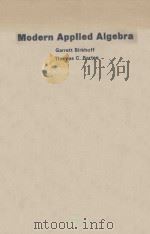
- MODERN APPLIED ALGEBRA
- THOMAS C.BARTEE"
-
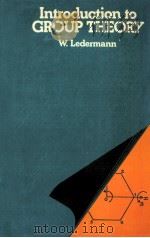
- INTRODUCTION TO GROUP THEORY
- 1973 Richard Clay
-
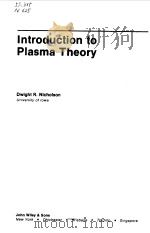
- INTRODUCTION TO PLASMA THEORY
- 1983 JOHN WILEY & SONS
-
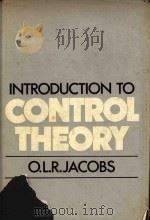
- Introduction to control theory
- 1974 Clarendon Press
-
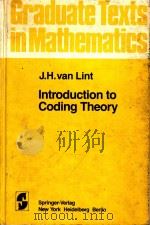
- Introduction to coding theory
- 1982 Springer-Verlag
-

- Introduction to combinatorial theory
- 1984 Wiley
-
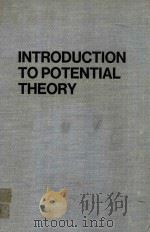
- INTRODUCTION TO POTENTIAL THEORY
- 1969 ROBERT E.KRIEGER PUBLISHING COMPANY
-
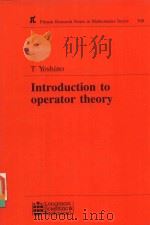
- INTRODUCTION TO OPERATOR THEORY
- 1993 LONGMAN SCIENTIFIC & TECHNICAL
-

- INTRODUCTION TO APPROXIMATION THEORY
- 1982 AMS CHELSEA PUBLISHING
-
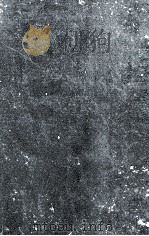
- AN INTRODUCTION TO SEMIGROUP THEORY
- 1976 ACADEMIC PRESS INC.
-

- INTRODUCTION TO STRING FIELD THEORY
- 1988 World Scientific Publishing Co.Pte.Ltd
-

- INTRODUCTION TO LOGICAL THEORY
- 1963 UNIVERSITY PAPERBACKS
-

- INTRODUCTION TO ALGEBRAIC NUMBER THEORY
- 1955 THE OHIO STATE UNIVERSITY PRESS
提示:百度云已更名为百度网盘(百度盘),天翼云盘、微盘下载地址……暂未提供。➥ PDF文字可复制化或转WORD
